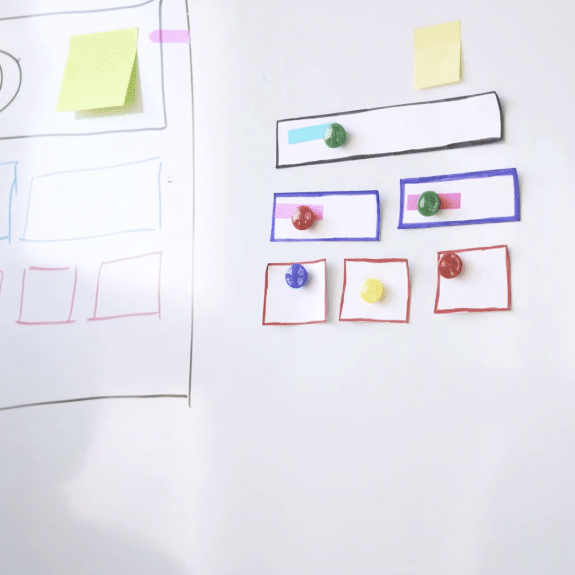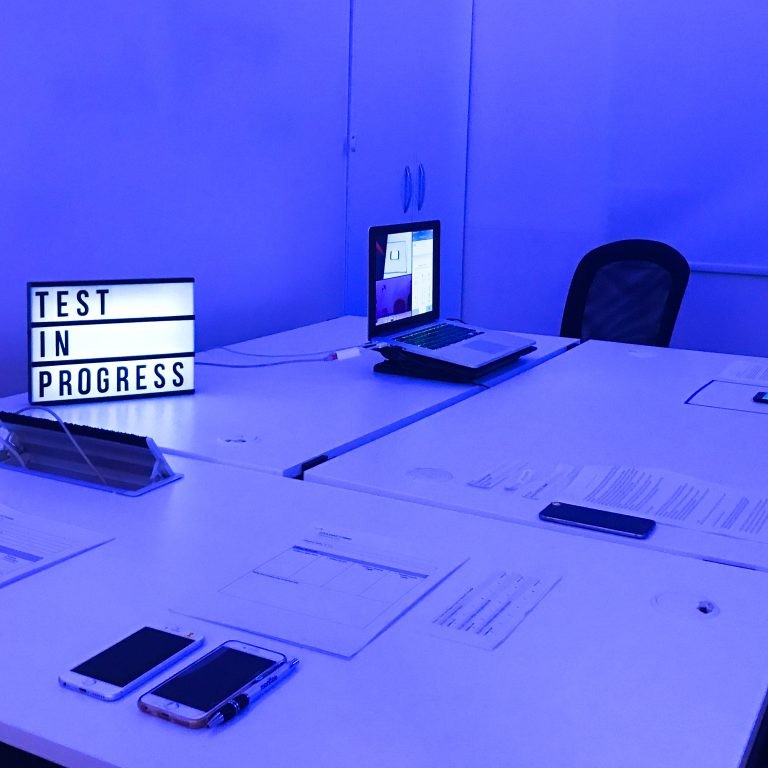A Match Made in Heaven:How to Use Data to Design the Perfect User Experience
A Match Made in Heaven:How to Use Data to Design the Perfect User Experience
We’ve all read Romeo and Juliet and other classic love stories. We’ve seen countless Hollywood movies where the nerdy (guy, usually) gets the more socially adept, creative, more attractive girl. And we’ve all complained about these same tropes and how unrealistic they are.
Well, as true as that is, we’re here to tell you that those nerds and those creative designers really should be getting together more often! Personalities and gender preferences aside, professionally these two areas of specialization are truly a match made in heaven, and we’re here to identify exactly why that is.
Designers are often just as hesitant to engage with data as they are to engage with the data scientists themselves. Data can be intimidating, and – while we’re being a little tongue-in-cheek about relationship issues between data scientists and designers – it is a legitimate problem if data scientists and designers are not in constant contact with one another and sharing insights together.
So without further ado, what is it that data scientists have to offer designers beyond big words and too many numbers?

Bottom Line: What is the point of design?
What’s the point of design? The user experience. Nothing else matters, even if oftentimes designers get lost in the weeds and forget this fundamental fact.
Another fundamental fact: data can significantly improve what you know about how users experience your product, and therefore how it should (and sometimes how it shouldn’t) be designed.
And a final fact: data is never the be all and end of all any discussion regarding how to move a product forward. It’s the synergy between design ideas and data-driven research that produces results rather than data telling us how to design something perfectly, or the other way round.
Combine a Designer’s Instinct with Research
UX Designers often solve a design problem using their training, their instincts, and what’s worked for them in the past. As they should! Designers should obviously use the tools at their disposal and the experience they’ve attained to attack every problem they come across. This can often mean that even when the research and user tests suggest a design should be made in one way, some designers opt to lean on what they already know, either ignoring or eliding what the data and the data analysts are telling them. On top of this, designers research – even when researching every portion of a user’s journey – and make decisions based on what the majority of users establish, perhaps feeling compelled to ignore concerns of a minority of users. Data algorithms and data scientists can more precisely analyze where pitfalls do and don’t lie.
And that part about what’s worked for them in the past? That can be based on a lot of false memories and biases. Maybe the designer liked something they did that actually ended up not being as successful as they remember. Maybe there was a reason something worked in the past that couldn’t work in the present. Data can mine into thousands of design examples – more experience than any one designer accumulates throughout their entire career – and determine what has worked and what hasn’t. From there, your team made up of data scientists and designers can build a UX research plan that puts everyone on the same page. From there, of course, designers and developers should work together to form the best experience possible, all the way through the product testing process
Using Data to Innovate Combined with a Designer’s Experience
Many designers work exclusively in one industry, and as a result they grow to know the industry inside and out. This of course allows them to streamline their designs and to focus their design on a knowledge of what the users and the client are looking for.
But there are a couple of disadvantages as well. It can mean that designers get trapped into a particular way of doing things, and miss the potential for changing up how a product is designed entirely – possibly a trend that one WOULD pick up in the data. Similarly, it can mean that they’re missing trends as they occur in the field and get too used to the same type of designs for the same type of client.
Product testing, field studies and interviews can produce data that allows you to see exactly how users are interacting with a product, and also to see precisely who those users are. Maybe there’s a niche user in the field that hitherto has been missed by other designers – giving your company the chance to be innovative. Or maybe users are changing – well, users are definitely always changing! – and data can help you see exactly which direction they’re going so your design will pick up on it before it’s become outdated.
Combining User Data with Heuristic Analysis Rather than one or the other
Again, we’d like to stress that without a designer’s knowledge and skillset, the data alone gets you nowhere. But the vice versa is true as well. Heuristic analysis is a great example of a set of principles that provide a rule of thumb to go by for every designer. However, just because a certain design passes a heuristic evaluation (or even if it doesn’t!), that might or might not have anything to do with the users of the product. As we said at the start, the UX is the only thing that matters, and only extensive data analysis can tell you exactly why and how a user interacts with a product, and if the design matches up with that analysis, then happy days!

Combining What Designers Like With What Users Like
This is obviously the summation of everything, but design goes through waves of what’s popular and what’s not. That may or may not always align with what the data suggests users are gravitating towards. Any popular trend in design should first be analyzed for how it’s working in the field, with user feedback placed at the forefront rather than the latest trend.
Key Takeaways
It really is a match made in heaven. Designers bring a set of training, experience and skill sets totally foreign to data analysts, but the same is true in reverse. One brings a more qualitative outlook, but when you need to blend quality with a quantitative outlook – as every designer does – then data analysts are invaluable. When you bring them together, what you accomplish is the perfect way to design a product towards the users and the user experience you want most. So, delete that dating app – you might only need to shout across the office to find the person who’ll truly complete you!
Reading Time: 8 minutes
Don’t miss out the latestCommencis Thoughts and News.
27/11/2019
Reading Time: 8 minutes
We’ve all read Romeo and Juliet and other classic love stories. We’ve seen countless Hollywood movies where the nerdy (guy, usually) gets the more socially adept, creative, more attractive girl. And we’ve all complained about these same tropes and how unrealistic they are.
Well, as true as that is, we’re here to tell you that those nerds and those creative designers really should be getting together more often! Personalities and gender preferences aside, professionally these two areas of specialization are truly a match made in heaven, and we’re here to identify exactly why that is.
Designers are often just as hesitant to engage with data as they are to engage with the data scientists themselves. Data can be intimidating, and – while we’re being a little tongue-in-cheek about relationship issues between data scientists and designers – it is a legitimate problem if data scientists and designers are not in constant contact with one another and sharing insights together.
So without further ado, what is it that data scientists have to offer designers beyond big words and too many numbers?

Don’t miss out the latestCommencis Thoughts and News.
Bottom Line: What is the point of design?
What’s the point of design? The user experience. Nothing else matters, even if oftentimes designers get lost in the weeds and forget this fundamental fact.
Another fundamental fact: data can significantly improve what you know about how users experience your product, and therefore how it should (and sometimes how it shouldn’t) be designed.
And a final fact: data is never the be all and end of all any discussion regarding how to move a product forward. It’s the synergy between design ideas and data-driven research that produces results rather than data telling us how to design something perfectly, or the other way round.
Combine a Designer’s Instinct with Research
UX Designers often solve a design problem using their training, their instincts, and what’s worked for them in the past. As they should! Designers should obviously use the tools at their disposal and the experience they’ve attained to attack every problem they come across. This can often mean that even when the research and user tests suggest a design should be made in one way, some designers opt to lean on what they already know, either ignoring or eliding what the data and the data analysts are telling them. On top of this, designers research – even when researching every portion of a user’s journey – and make decisions based on what the majority of users establish, perhaps feeling compelled to ignore concerns of a minority of users. Data algorithms and data scientists can more precisely analyze where pitfalls do and don’t lie.
And that part about what’s worked for them in the past? That can be based on a lot of false memories and biases. Maybe the designer liked something they did that actually ended up not being as successful as they remember. Maybe there was a reason something worked in the past that couldn’t work in the present. Data can mine into thousands of design examples – more experience than any one designer accumulates throughout their entire career – and determine what has worked and what hasn’t. From there, your team made up of data scientists and designers can build a UX research plan that puts everyone on the same page. From there, of course, designers and developers should work together to form the best experience possible, all the way through the product testing process
Using Data to Innovate Combined with a Designer’s Experience
Many designers work exclusively in one industry, and as a result they grow to know the industry inside and out. This of course allows them to streamline their designs and to focus their design on a knowledge of what the users and the client are looking for.
But there are a couple of disadvantages as well. It can mean that designers get trapped into a particular way of doing things, and miss the potential for changing up how a product is designed entirely – possibly a trend that one WOULD pick up in the data. Similarly, it can mean that they’re missing trends as they occur in the field and get too used to the same type of designs for the same type of client.
Product testing, field studies and interviews can produce data that allows you to see exactly how users are interacting with a product, and also to see precisely who those users are. Maybe there’s a niche user in the field that hitherto has been missed by other designers – giving your company the chance to be innovative. Or maybe users are changing – well, users are definitely always changing! – and data can help you see exactly which direction they’re going so your design will pick up on it before it’s become outdated.
Combining User Data with Heuristic Analysis Rather than one or the other
Again, we’d like to stress that without a designer’s knowledge and skillset, the data alone gets you nowhere. But the vice versa is true as well. Heuristic analysis is a great example of a set of principles that provide a rule of thumb to go by for every designer. However, just because a certain design passes a heuristic evaluation (or even if it doesn’t!), that might or might not have anything to do with the users of the product. As we said at the start, the UX is the only thing that matters, and only extensive data analysis can tell you exactly why and how a user interacts with a product, and if the design matches up with that analysis, then happy days!

Combining What Designers Like With What Users Like
This is obviously the summation of everything, but design goes through waves of what’s popular and what’s not. That may or may not always align with what the data suggests users are gravitating towards. Any popular trend in design should first be analyzed for how it’s working in the field, with user feedback placed at the forefront rather than the latest trend.
Key Takeaways
It really is a match made in heaven. Designers bring a set of training, experience and skill sets totally foreign to data analysts, but the same is true in reverse. One brings a more qualitative outlook, but when you need to blend quality with a quantitative outlook – as every designer does – then data analysts are invaluable. When you bring them together, what you accomplish is the perfect way to design a product towards the users and the user experience you want most. So, delete that dating app – you might only need to shout across the office to find the person who’ll truly complete you!



